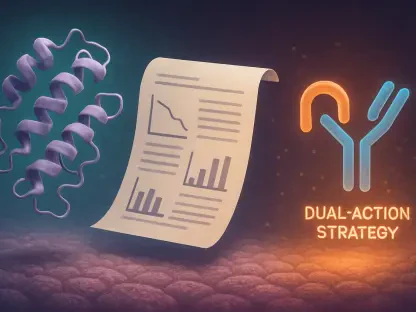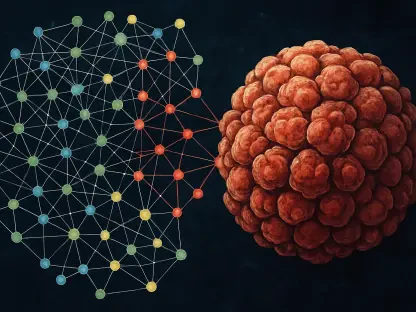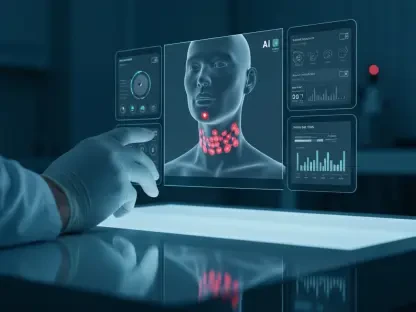Ivan Kairatov is a renowned Biopharma expert with a wealth of experience in research and development, particularly at the intersection of technology and innovation in the field. Today, he shares insights into the groundbreaking research conducted at the University of Florida on developing a universal cancer vaccine.
Can you explain the main idea behind the development of a universal cancer vaccine at the University of Florida?
The main idea is to create a standardized mRNA vaccine designed to stimulate the immune system to attack cancer cells. This vaccine is crafted to work alongside existing anticancer drugs, aiming to generate a robust immune response capable of targeting and eliminating tumors. The researchers sought to develop a versatile treatment that would be effective against multiple types of cancer rather than focusing on personalized approaches.
How does the mRNA vaccine work alongside anticancer drugs to stimulate the immune response?
The mRNA vaccine acts as a catalyst that primes the immune system. When paired with anticancer drugs, it helps promote a heightened response by encouraging immune cells, particularly T cells, to identify and attack cancer cells. This synergy amplifies the body’s natural defenses, allowing for a more effective attack on tumors.
What role do T cells play in the effectiveness of this vaccine in fighting cancer?
T cells are central to the immune system’s ability to combat cancer. The vaccine’s role is essentially to activate and multiply these T cells, which can then seek out and destroy cancer cells. By targeting the cancer more precisely and vigorously, T cells extend the vaccine’s effectiveness and contribute to decreasing tumor size.
Why is a universal approach to cancer vaccination considered more advantageous than personalized therapies like immune checkpoint inhibitors or T-cell therapies?
A universal approach circumvents the lengthy and complex process of creating personalized treatment plans. Personalized therapies require extensive profiling and can take months to develop, time that many patients simply don’t have. A universal vaccine offers faster deployment and can be adapted to various cancers, making it a more pragmatic option in urgent situations where time is critical.
How does the time required for manufacturing personalized vaccines impact treatment efficacy and urgency for cancer patients?
The personalization process involves next-generation sequencing and bioinformatics to tailor the vaccine, an endeavor that can take several months. This delay can be detrimental, as tumors may evolve or change during this time, potentially rendering the treatment less effective by the time it’s administered. A universal vaccine can be administered more promptly, addressing the cancer’s current state more accurately.
What were the results of the mouse-model study when the mRNA vaccine was used as a solo treatment?
The results were quite promising. In some experiments, particularly with models of skin, bone, and brain cancer, the vaccine alone managed to eliminate tumors entirely. This indicates significant potential for the vaccine not just as an adjunctive therapy but also as a standalone treatment option in certain cases.
Can you elaborate on how this vaccine helps reset the immune system in cancer patients?
Many cancer patients suffer from compromised immune systems. The vaccine essentially acts as a reset button, sparking an immune response that might otherwise be dormant or ineffective. By instigating a response that mimics a flu-like illness, it aids in re-engaging the immune system’s capacity to recognize and dismantle cancer cells.
What does inducing a flu-like illness contribute to stunting tumor growth?
Inducing this flu-like state isn’t just a side effect; it’s a vital part of the vaccine’s mechanism. The inflammation and immune activation associated with this state help to kick-start the immune system. This environment hampers the tumor’s ability to grow, and alongside this, a targeted immune response develops, focusing specifically on the tumor cells.
How does the immune response evolve to specifically target the tumor after receiving the vaccine?
Post-vaccination, the immune system begins to adapt and learns to recognize specific markers on the tumor cells. Over time, this trained immune response hones in on the cancer cells, allowing it to attack more accurately while leaving healthy cells untouched, which is crucial for effective cancer treatment.
What are the next steps in progressing from mouse models to human clinical trials?
Transitioning to human clinical trials involves extensive safety testing and optimizing the vaccine formulation to fit human physiology. These trials will evaluate the vaccine’s efficacy, safety, dosage, and potential side effects in humans to ensure it translates well from animal models to humans.
What challenges do you foresee in developing this vaccine for widespread use in humans?
One major challenge is ensuring the vaccine’s safety and efficacy across a diverse human population. Human immune systems vary significantly, and what works in mice doesn’t always translate directly to humans. Additionally, the logistics of mass production and distribution must be considered, especially ensuring accessibility for patients worldwide.
What potential impact could this research have on the future of cancer treatment?
If successful, this universal cancer vaccine could revolutionize the way we treat cancer, allowing for quicker, more adaptable treatment strategies. It promises greater accessibility and could potentially streamline cancer care, making treatments available to a broader spectrum of patients and drastically improving survival rates.
How do you measure success in these early stages of human clinical trials?
Success at this stage is determined by a combination of factors: achieving a favorable safety profile, observing a significant immune response against cancer cells, and assessing any reductions in tumor size. Positive results across these metrics can signal the potential for further development and eventual widespread use.
What are the key differences in response between the various types of cancers treated with the vaccine in the study (skin, bone, brain)?
Each cancer type responded differently, likely due to their inherent biological differences. The vaccine showed impressive tumor elimination in some models, highlighting its versatility. However, further studies are needed to understand fully the variability in responses, which can help tailor the vaccine for different cancer types.
Are there any known side effects observed during the preclinical trials with this vaccine?
In preclinical trials, side effects were generally limited to transient flu-like symptoms, which are actually considered beneficial for the reasons previously discussed. Long-term side effects are yet to be fully understood, but ongoing studies aim to ensure that any adverse reactions remain minimal.
Do you have any advice for our readers?
Stay informed and proactive about the latest developments in cancer research. Awareness and understanding of emerging therapies can empower patients and families to make informed decisions about their care options. Innovators are constantly striving to improve and develop treatments, and staying engaged with these advancements can make a significant difference.









